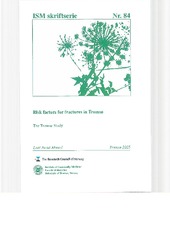| dc.description.abstract | <p>A fracture is a break or crack in a bone. Fractures are common and anyone can fracture a
bone. They occur when the bone can not withstand the physical force excerpted on it. There
are several types or classifications of fracture; simple, stress, comminuted, impact, compound,
complete and incomplete. Depending on the type and location of a fracture, the treatment
varies from immobilization using cast or splint to surgical intervention. Before the availability
of radiographic techniques, surgeons relied on knowledge of dissected specimens and clinical
evidence in determining the nature of the injury. Modem treatment of fractures began several
years after the discovery of X-rays at the end of the nineteenth century. </p>
With the explosion of epidemiologic activity just after the Second World War, there was
increased awareness of the increasing incidence of fractures especially among the elderly, and
several studies about the epidemiology of fractures were published. Thereafter studies
have shown an increasing incidence of all types of fractures. Recently a levelling out or
even decreasing trends in hip fracture incidence have been described. <br>
The seriousness of a fracture depends on the location of the fracture and the age of the
individual who suffered the fracture. Although fractures can affect any person worldwide,
increasing incidence of fractures among the elderly population constitutes a demanding health
problem in the western world during the last decades. Older adults suffer more from fractures
as their bones are more likely to be brittle and therefore need less force to fracture. When
occurring in the elderly or as a result of minimal trauma (falling from standing height)
fractures are considered to be osteoporotic. | en_US |


 English
English norsk
norsk